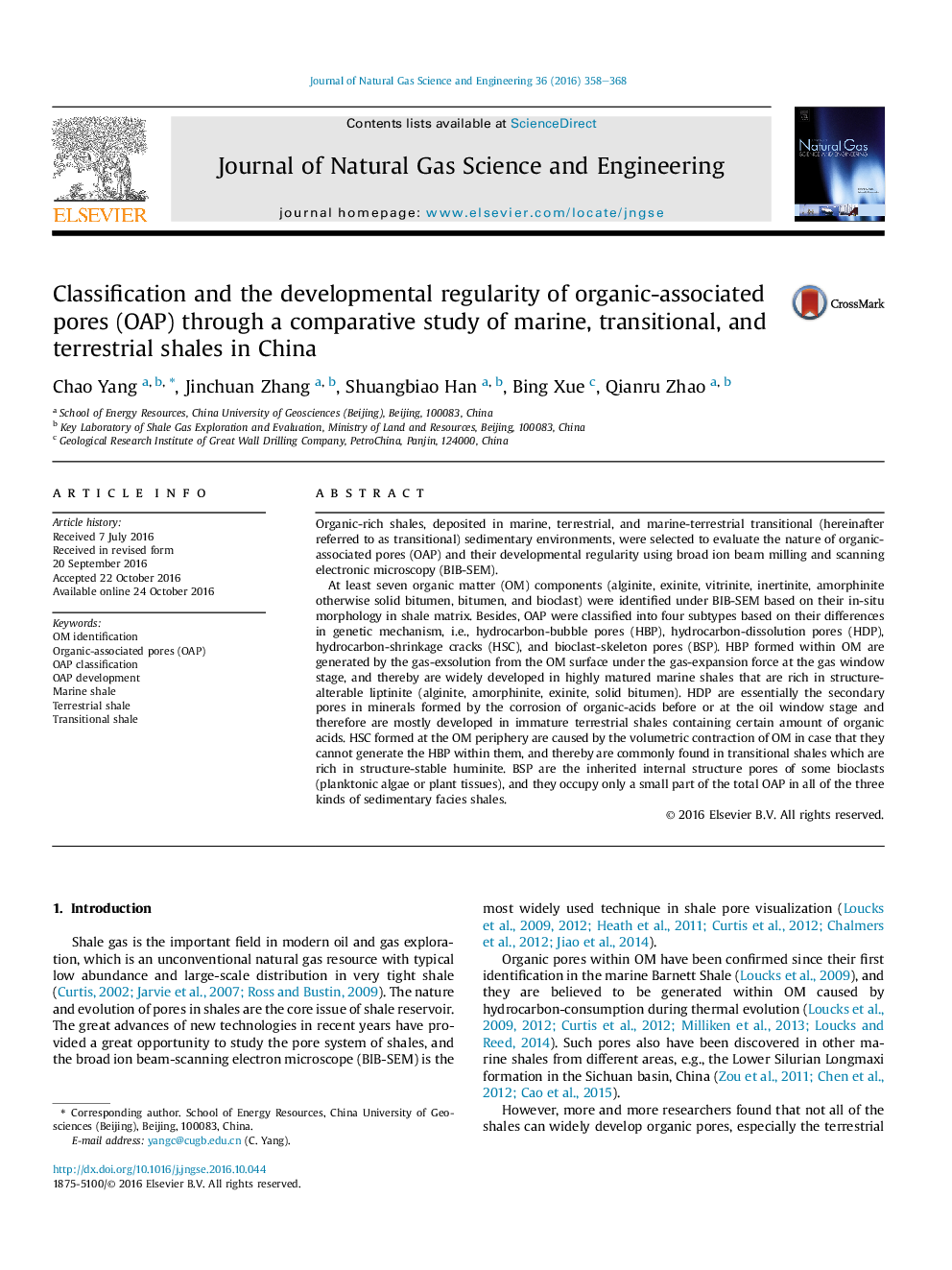| Article ID | Journal | Published Year | Pages | File Type |
|---|---|---|---|---|
| 5484830 | Journal of Natural Gas Science and Engineering | 2016 | 11 Pages |
Abstract
At least seven organic matter (OM) components (alginite, exinite, vitrinite, inertinite, amorphinite otherwise solid bitumen, bitumen, and bioclast) were identified under BIB-SEM based on their in-situ morphology in shale matrix. Besides, OAP were classified into four subtypes based on their differences in genetic mechanism, i.e., hydrocarbon-bubble pores (HBP), hydrocarbon-dissolution pores (HDP), hydrocarbon-shrinkage cracks (HSC), and bioclast-skeleton pores (BSP). HBP formed within OM are generated by the gas-exsolution from the OM surface under the gas-expansion force at the gas window stage, and thereby are widely developed in highly matured marine shales that are rich in structure-alterable liptinite (alginite, amorphinite, exinite, solid bitumen). HDP are essentially the secondary pores in minerals formed by the corrosion of organic-acids before or at the oil window stage and therefore are mostly developed in immature terrestrial shales containing certain amount of organic acids. HSC formed at the OM periphery are caused by the volumetric contraction of OM in case that they cannot generate the HBP within them, and thereby are commonly found in transitional shales which are rich in structure-stable huminite. BSP are the inherited internal structure pores of some bioclasts (planktonic algae or plant tissues), and they occupy only a small part of the total OAP in all of the three kinds of sedimentary facies shales.
Keywords
Related Topics
Physical Sciences and Engineering
Earth and Planetary Sciences
Earth and Planetary Sciences (General)
Authors
Chao Yang, Jinchuan Zhang, Shuangbiao Han, Bing Xue, Qianru Zhao,
